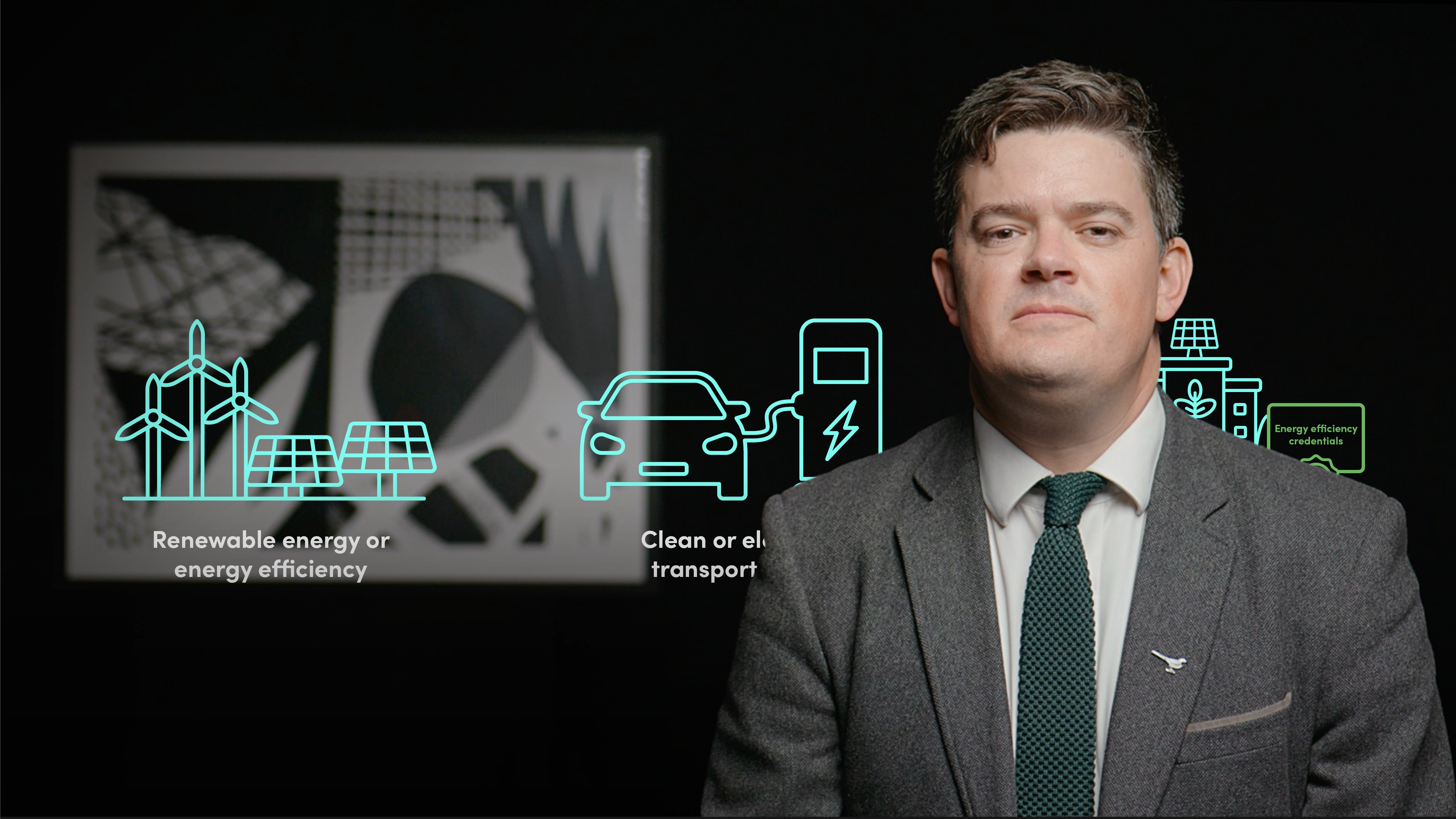
Execution and Structuring of ESG-labelled Bonds

Angel Beltran
10 years: Sustainability Bonds
In the previous video, Angel covered the rapid increase in issuance of ESG-labelled bonds and why issuers are increasingly adopting this structure. In this video, Angel outlines exactly how to structure ESG-labelled issuance by explaining what happens in each week of the structuring process.
In the previous video, Angel covered the rapid increase in issuance of ESG-labelled bonds and why issuers are increasingly adopting this structure. In this video, Angel outlines exactly how to structure ESG-labelled issuance by explaining what happens in each week of the structuring process.

Execution and Structuring of ESG-labelled Bonds
10 mins 40 secs
Key learning objectives:
Understand the principles that ESG-labelled bonds are based on
Understand the requirements and considerations around issuance of different types of ESG-labelled bonds
Understand the key steps involved in each week of the structuring process
Overview:
ESG-labelled bonds provide an opportunity to meet market preferences and effectively allows issuers to better position themselves in the debt capital market. The process of structuring ESG bonds typically takes 6-8 weeks and is quite onerous, so it is vital for issuers to understand what happens in each stage of issuance.
What are the principles that ESG-labelled bonds are based on?
The International Capital Market Association (or ICMA) runs the secretariat for the family of principles covering green, social, sustainability and sustainability-linked bonds structures. ICMA principles contain the key elements of the frameworks in which issuers detail the way their ESG offerings will work in practice. They explain not only the mechanics of the eligible categories or targets, but also the selection process, management, governance, reporting and verification.
Alignment between the framework and the principles is typically confirmed by an ESG agency that provides a second-party opinion.
Some jurisdictions have displayed some efforts in order to regulate this market and the structuring process. For example, the European Union´s proposition of an EU Green Bond Standard, that considers:
- a standardised template to include all the various features of a green bond offer (a fact sheet instead of a framework under the proposal)
- alignment of use of proceeds according to the EU Taxonomy and regulation of the independent party certification, among other topics.
What happens in the first week of structuring?
- Evaluation of the potential ESG label alternatives
- Decide on the best structure to start with, either a proceeds-based or a sustainability-linked instrument
- Preliminary discussions on the selection of eligible expenditures or project categories for the use of proceeds, potential KPIs and sustainability performance targets for sustainability-linked bonds.
- Selection of an SPO, the ESG agency that will confirm the alignment of the framework with the relevant Principles
- Contact external auditors or third-party assurers in charge of reviews
What are the considerations regarding eligibility criteria for different types of ESG bonds?
- Preliminary discussions on the selection of potential eligible expenditures or project categories for use of proceeds structures, as green, social or sustainability bonds
- Most eligible green categories include projects related to renewable energy or energy efficiency, clean or electric transportation, and green or environmentally certified buildings. Social bonds normally consider categories on projects related to access to basic infrastructure, essential services and also affordable housing and employment generation
- For sustainability-linked bonds, the team will discuss the selection of potential key performance indicators (KPIs) which is what is going to be measured, for example greenhouse gas emissions. As well as the calibration of the sustainability performance targets (or SPTs) – which are the level of improvement and timeframe for achievement, as for example a 30% reduction in greenhouse gas emissions by 2025 vs 2021 levels
- Sustainability-linked bonds carry a contingent penalty or coupon step-up that will be triggered if the targets are not met. The preferred structure will largely depend on the issuer’s objectives, the data available and the broader project considerations.
What happens in the second week of structuring?
- Finalise discussions on the use of proceeds categories, or selection of potential KPIs and calibration of SPTs
- Draft framework
- Select an SPO provider, typically through an RfP process
- Send first draft of the framework to the selected SPO provider
What happens in the following 2-4 weeks?
- Follow-up discussions with the SPO provider
- Addition of the legal points related to the structure into the bond’s documentation – typically risk factors, and use of proceeds or coupon section
- Draft of framework and structure put into the investor presentation
- Draft SPO expected to be sent to the issuer
- Comments on first draft of SPO and update framework accordingly
- Receive potential second draft SPO
- Framework and SPO finalised
What happens during the last weeks of structuring?
- Final draft of the framework and structure inserted in the investor presentation
- Preparation of marketing exercise, including potential Q&A
- Preparation of the different links that will be made available to investors (framework, SPO, investor presentation)
- Investor engagement and calibration of launching strategy

Angel Beltran
There are no available Videos from "Angel Beltran"





















